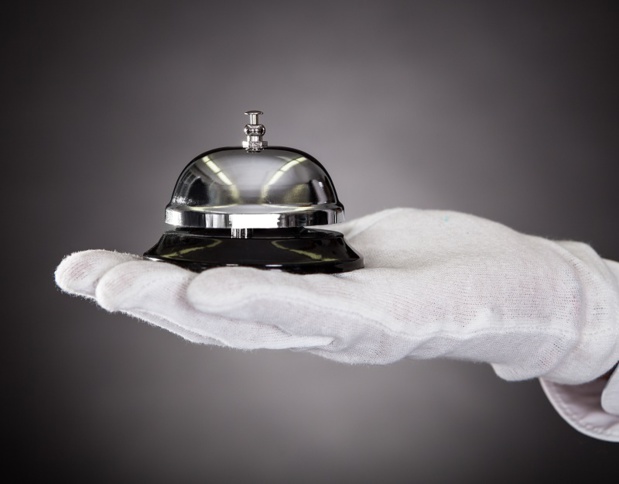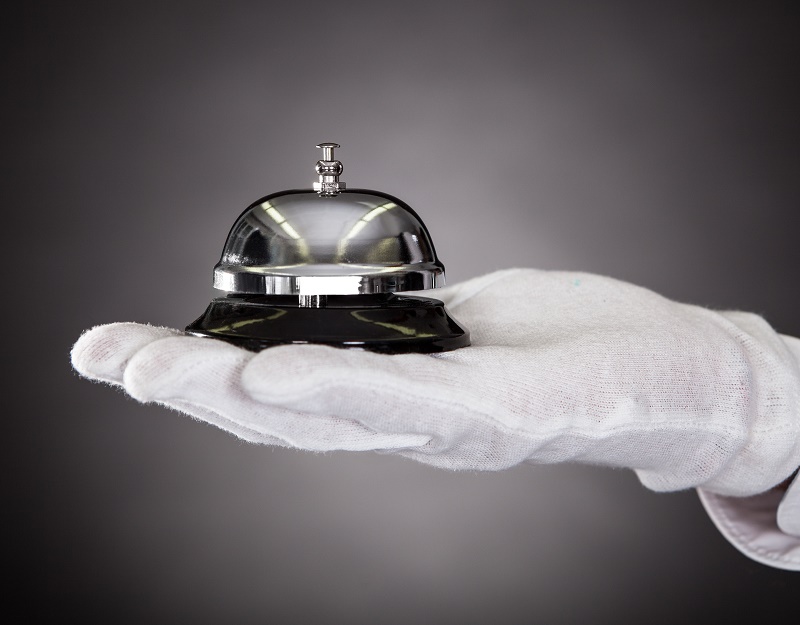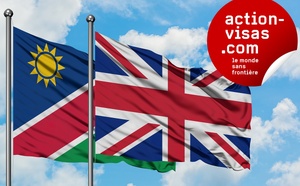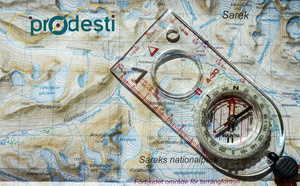
If not everyone can afford these palaces for long stays, they could be the opportunity to experience a dream day or weekend. © apops - Fotolia.com
Paris will remain one of the most touristic cities in the world as it seduces with its monuments but also its art of living, real or imagined.
Some facilities perfectly reflect the classy and glamorous image of the Capital, especially in the eyes of foreign tourists.
If not everyone can afford these palaces for long stays, they could be the opportunity to experience a dream day or weekend.
Some facilities perfectly reflect the classy and glamorous image of the Capital, especially in the eyes of foreign tourists.
If not everyone can afford these palaces for long stays, they could be the opportunity to experience a dream day or weekend.
Geographical location
Autres articles
-
 Riyad : l'hôtel Al Faisaliah passe sous la bannière Mandarin oriental
Riyad : l'hôtel Al Faisaliah passe sous la bannière Mandarin oriental
-
 Marcel Thoma nommé directeur général du Mandarin Oriental New York
Marcel Thoma nommé directeur général du Mandarin Oriental New York
-
 Grèce : Mandarin Oriental ouvre son premier resort à Costa Navarino
Grèce : Mandarin Oriental ouvre son premier resort à Costa Navarino
-
 Milan : le Mandarin Oriental rouvre ses portes le 1er septembre 2020
Milan : le Mandarin Oriental rouvre ses portes le 1er septembre 2020
-
 Mandarin Oriental : Jill Kluge nommée directrice marketing
Mandarin Oriental : Jill Kluge nommée directrice marketing
5 of these facilities are located in a zone that we named “the golden triangle”, slightly extended, in the 8th and 16th arrondissements (districts.)
| Palace | Arr. | Proximité immédiate (moins de 10 min à pied) |
| Le Shangri-La | 16e | Trocadéro,Tour Eiffel, Pont de l'Alma, Seine |
| Le Royal Monceau | 8e | Arc de triomphe, Champs-Élysées, Parc Monceau |
| Le Plaza Athénée | 8e | Champs-Élysées, Ponts des Invalides et de l'Alma, Seine, Grand Palais |
| Le Bristol | 8e | Champs-Élysées, la Concorde, Grand Palais, Élysée |
| Le George V | 8e | Arc de triomphe, Champs-Élysées, Pont de l'Alma, Seine |
The 3 other palaces are located in an equally quintessential Parisian zone, demarcated by Les Tuileries, Louvre Museum, and Place Vendôme, in the 1st and 2nd arrondissements
| Palace | Arr. | Proximité immédiate (moins de 10 min à pied) |
| Le Meurice | 1er | Louvre, la Concorde, Palais Royal, Place Vendôme |
| Le Park Hyatt Vendôme | 2e | Place Vendôme, Louvre, la Concorde, Palais Royal |
| Le Mandarin Oriental | 1er | Louvre, la Concorde, Palais Royal, Place Vendôme |
If the objective is to be strategically positioned to leisurely explore the capital by foot, Le Bristol seems to be the best option since it is located less than a half-hour walk (at a slow pace) from all the listed sites in the table above.
Le Shangri-La stands out for its proximity to the Trocadéro garden and for its view on the Eiffel Tower. The Four Season (George V) is also conveniently located near the Eiffel Tower.
For lovers of the Arc de Triomphe, Le Royal Monceau is the best choice.
The addresses are prestigious with the Faubourg Saint Honoré (Mandarin), Champs-Élysées (George V), Montaigne Avenue (Plaza Athénée) or the diplomacy neighborhood (Bristol).
Le Shangri-La stands out for its proximity to the Trocadéro garden and for its view on the Eiffel Tower. The Four Season (George V) is also conveniently located near the Eiffel Tower.
For lovers of the Arc de Triomphe, Le Royal Monceau is the best choice.
The addresses are prestigious with the Faubourg Saint Honoré (Mandarin), Champs-Élysées (George V), Montaigne Avenue (Plaza Athénée) or the diplomacy neighborhood (Bristol).
History
| Établissement | Construction | Chambres et Suites |
| Le Meurice | 1817 | 160 |
| Park Hyatt | 1852 | 153 |
| Shangri-La | 1896 | 101 |
| Plaza Athénée | 1911 | 191 |
| Bristol | 1925 | 187 |
| Royal Monceau | 1928 (bâtiment début du siècle) | 149 |
| George V | 1928 | 240 |
| Mandarin | Années 1930 | 138 |
Opened where the Feuillants Convent was located on Rue Saint-Honoré in 1817, Le Meurice is the capital’s most ancient palace, highly appreciated at the time by a new clientele of English tourists. At the start of the century, it was moved to Tivoli street (facing the Tuileries Garden) and revamped by the architect Nénot.
Built in 1896 for the Prince Roland Bonaparte, a geographer, botanist and the great-nephew of Napoléon, the history of the luxury group Shangri-La is very recent since it opened in December 2010 (it was the group’s first European hotel.)
Since 1911, Le Plaza Athénée is a symbol of prestige, luxury and art of living à la française. In 2000, the new millennium was an opportunity to undertake modern renovations (by Patrick Jouin.)
Opened in 1925 (Hippolyte Jammet), Le Bristol is famous for its appeal to important figures and Heads of States. The building that houses the hotel actually dates from 1760.
Le George V, built in 1928 and inspired by New-York architecture, may be the most famous Parisian Palace due to its location on the Champs-Élysées. Acquired by the Canadian group Four Season, it underwent major construction work before reopening in 1999. It is the capital’s largest palace.
Designed by the architect Louis Dubayon and built in 1928, Le Royal Monceau is symbolic of the Roaring Twenties: seducing artists, intellectuals, celebrities of the time, and even Maharajas. In 2008, it was bought out by the Singaporean group Raffles that endeavored to renew it over two years (Philippe Starck). A new wing was established along with many private apartments.
Opened in 2011, in an Art Déco Parisian building, Le Mandarin Oriental Paris is the first implantation of the group in France.
Opened in 2002 in contemporary style, Park Hyatt looks to bring modernity to the world of palaces.
Built in 1896 for the Prince Roland Bonaparte, a geographer, botanist and the great-nephew of Napoléon, the history of the luxury group Shangri-La is very recent since it opened in December 2010 (it was the group’s first European hotel.)
Since 1911, Le Plaza Athénée is a symbol of prestige, luxury and art of living à la française. In 2000, the new millennium was an opportunity to undertake modern renovations (by Patrick Jouin.)
Opened in 1925 (Hippolyte Jammet), Le Bristol is famous for its appeal to important figures and Heads of States. The building that houses the hotel actually dates from 1760.
Le George V, built in 1928 and inspired by New-York architecture, may be the most famous Parisian Palace due to its location on the Champs-Élysées. Acquired by the Canadian group Four Season, it underwent major construction work before reopening in 1999. It is the capital’s largest palace.
Designed by the architect Louis Dubayon and built in 1928, Le Royal Monceau is symbolic of the Roaring Twenties: seducing artists, intellectuals, celebrities of the time, and even Maharajas. In 2008, it was bought out by the Singaporean group Raffles that endeavored to renew it over two years (Philippe Starck). A new wing was established along with many private apartments.
Opened in 2011, in an Art Déco Parisian building, Le Mandarin Oriental Paris is the first implantation of the group in France.
Opened in 2002 in contemporary style, Park Hyatt looks to bring modernity to the world of palaces.
Find the entire Parisian Palaces study by clicking here
Methodology
In this study we will review the “official” Parisian palaces. Indeed, this label is very recent in France. The 5 star category dates from only 2009 in our country (a controlled category that must meet criteria pertaining to comfort, hygiene, services, accessibility, access to new technologies, and sustainable development.)
The “palace” distinction is granted by a jury based on very detailed requirements.
In this respect, 16 facilities in France have received this distinction, of which 8 are located in Paris. Our study is based on these Parisian hotels.
The “palace” distinction is granted by a jury based on very detailed requirements.
In this respect, 16 facilities in France have received this distinction, of which 8 are located in Paris. Our study is based on these Parisian hotels.



























![Cocooning, surtourisme, digital nomads... les néologismes au service de la prospective ? [ABO] Cocooning, surtourisme, digital nomads... les néologismes au service de la prospective ? [ABO]](https://www.tourmag.com/photo/art/large_16_9/93575745-65377296.jpg?v=1767793700)















